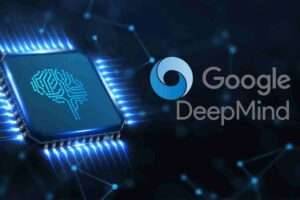In an increasingly data-driven world, artificial intelligence (AI) plays a pivotal role across industries, supporting critical business decisions and powering innovative products and services. However, the success of AI systems depends heavily on the quality and integrity of the data used to train machine learning models.
This is where blockchain technology steps in – offering a secure, transparent way for enterprises to trace the origin and usage of AI training data. In this post, we’ll explore why securing training data provenance matters, how blockchain enables trusted data sourcing and handling, along with real-world use cases.
The Growing Importance of Training Data Provenance
Data provenance refers to the lineage of a data asset – its origins, characteristics, processing steps applied, and usage over time. When it comes to AI model development, understanding data provenance is critical for several reasons:
- Data quality and ethics: By tracing data back to the source, issues like biases, errors, and mislabeling can be identified that impact model accuracy and fairness.
- Trust and transparency: Insights into an AI system’s training data allows stakeholders to understand how it functions and will behave.
- Regulatory compliance: Laws like GDPR grant users the right to know how their data is used. Maintaining clear provenance helps demonstrate regulatory adherence.
- Model explainability: Documenting the specific data used for developing and updating models is key to explaining their predictions and behaviors.
How Blockchain Enables Secure, Trustworthy Data Traceability
Blockchain is a distributed ledger technology that establishes trust, accountability, and transparency in record-keeping through decentralization and cryptographic validation.
Here are some of the key attributes that make blockchain well-suited for managing AI training data provenance:
- Decentralization: Rather than a central server, data is replicated across many nodes in a peer-to-peer network. This eliminates single points of failure risk.
- Immutability: Once data is written to the ledger, it cannot be altered or deleted. This prevents tampering and preserves integrity.
- Provenance tracking: Detailed logs allow the full lifecycle of assets to be traced – from origin, to processing, ownership transfers, and usage.
- Consensus and validation: Transactions must be cryptographically signed and verified by network participants to be added to the ledger.
- Auditability: An accurate, time-stamped trail of data sourcing and usage can be reviewed at any time.
Real-World Applications of Blockchain for AI Training Data
The unique capabilities unlocked by blockchain have sparked innovative applications across industries. Here are a few examples of how enterprises are leveraging blockchain to track AI training data provenance:
Healthcare
- Log and share imaging datasets like x-rays while preserving patient privacy
- Trace data back to hospitals and modalities to ensure regulatory compliance
- Enable transparent audits of AI model development for external validation
Autonomous Vehicles
- Securely aggregate and utilize datasets from multiple operators and sources
- Mitigate adversarial data poisoning attacks by identifying anomalous samples
- Track data usage for particular locations to explain model behaviors
Supply Chain
- Share IoT sensor data from partners while maintaining source control
- Identify root causes when analytics models underperform or behave unexpectedly
- Comply with regulations around data transparency in predictive models
Challenges with Blockchain Implementation
Despite compelling benefits, blockchain-based solutions for managing AI training data come with certain adoption challenges:
- Scalability: Public blockchains can struggle with throughput needed for large datasets. Private networks with fewer nodes help address this.
- Latency: Time to add data to public chains like Ethereum may be too slow for real-time provenance tracking.
- Storage limits: Ledgers have caps on transaction sizes, requiring extra care when logging large, complex datasets.
- Integration complexity: Hooking into existing data pipelines and model development workflows takes thoughtful design.
- Usability: User-friendly interfaces are needed so that non-technical domain experts can review and query provenance logs.
The Future of Blockchain for AI Trust and Transparency
While work remains in maturing solutions, blockchain represents a paradigm shift in how enterprises can engage with stakeholders around responsible and ethical AI. By offering the technical means to log, audit, and share information about how models are built, companies can develop AI that aligns with human values.
As platforms evolve to enterprise-grade capabilities – with increased throughput, active governance, and seamless integrations – blockchain networks tailored for AI trust and transparency will likely see rapid mainstream adoption across sectors like healthcare, autonomous transport, finance, and beyond.
















Add Comment